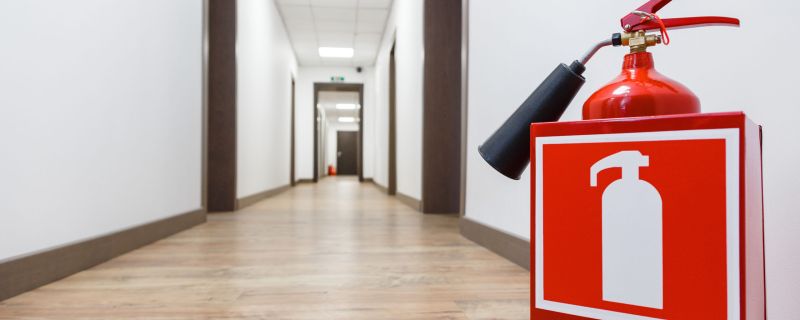
- Claims & Risk Management
- 3 comments
For businesses, the risk of a fire is a considerable one that can have serious ramifications. Many businesses that suffer a major fire either do not reopen or fail within three years of the fire. While it is important to have proper fire insurance coverage, prevention and preparation are keys to minimizing your risk. Fire extinguishers play an important role in your preparation efforts, and in the event of a fire, they could mean the difference between minor damage and a complete disaster. Follow the standards below to ensure that you are prepared to protect your business and employees through the proper use of fire extinguishers.
Types of Fires
There are five different classifications of fires. Some fire extinguishers should be used specifically for only one type of fire, while others are effective for multiple types. However, some extinguishers are quite dangerous when used on the wrong type of fire. Fire extinguishers should have labels specifying which type(s) of fire they are meant to combat.
- Class A: Ordinary combustibles, such as trash, wood, paper and cloth
- Class B: Flammable liquids, such as gasoline, petroleum oil and paint. Also includes flammable gases, such as propane and butane, but does not include fires from cooking oil and grease.
- Class C: Fires from energized electrical equipment, such as motors, transformers and appliances.
- Class D: Combustible metals, such as potassium, sodium, aluminum and magnesium.
- Class K: Cooking oils and greases.
OSHA Requirements
OSHA has standards regarding portable fire extinguishers that employers provide for employees. Following these standards is not only important from a compliance standpoint, but also to help keep your employees and company safe and minimize the risk involved with a fire.
General Requirements
Employers must provide approved portable fire extinguishers where employees may easily locate, identify and access when necessary. The extinguishers should be fully charged and operable at all times and kept in their designated spot when not in use.
Selection and Distribution
Fire extinguishers should be selected based on the class of anticipated or possible workplace fires. Your workplace may be vulnerable to multiple types of fires, in which case you would need the appropriate extinguisher for each type. Fire extinguishers should be placed within a specified distance from any person potentially needing access to them, based on class:
- Class A: 75 feet
- Class B: 50 feet
- Class C: 50-75 feet
- Class D: 75 feet

Inspection, Maintenance and Testing
The employer must conduct, or have an expert conduct, an annual inspection for each fire extinguisher. Note that stored-pressure extinguishers do not require an internal inspection. OSHA requires that the date of the check must be recorded and retained for a year.
Stored pressure, dry-chemical extinguishers that require a 12-year hydrostatic test should undergo applicable maintenance every six years.
Hydrostatic Testing
Portable extinguishers should undergo hydrostatic testing according to the appropriate interval depending on the type of extinguisher—see OSHA 1910.157(f). Also, employers should follow all other maintenance requirements under that section.
Fire Extinguishers Training and Education
The employer also must provide education for employees to familiarize them with the general principles of fire extinguisher use. Training should include:
- Which classes of extinguishers are found in the workplace and the type of fire for which each should be used
- Where they are each located
- How to properly use each extinguisher
This training should occur upon initial employment and at least annually thereafter. For a full list of OSHA regulations regarding fire extinguishers, visit www.osha.gov/pls/oshaweb/owadisp.show_document?p_table=STANDARDS&p_id=9811.
The Safegard Group’s risk team can help assess your business’s access to fire extinguishers and help you find training, contact us to find out more.


3 Comments
In order to comply with OSHA requirements, I’ll buy some fire extinguishers so that my building can be safe. It might be a good idea to put them in areas that are easy to locate so that my employees can extinguish a fire quickly if needed. Since they should be selected based on the class of the fires, I may buy a class D fire extinguisher near the workspace so that my employees are prepared in the event of a fire.
That is really cool that fire extinguishers can play an important role in preparing in an event from a fire. Maybe I should look into getting a fire extinguisher sometime soon for my home. Then I would be able to be prepared for any fire that may happen. https://www.eastcoastfire.net/fire-extinguisher1
I appreciate your mentioning that businesses must supply authorized portable fire extinguishers that are easy for employees to find, recognize, and use when necessary. My sister wants to keep her workplace secure. I’ll suggest that she receive fire extinguisher training.